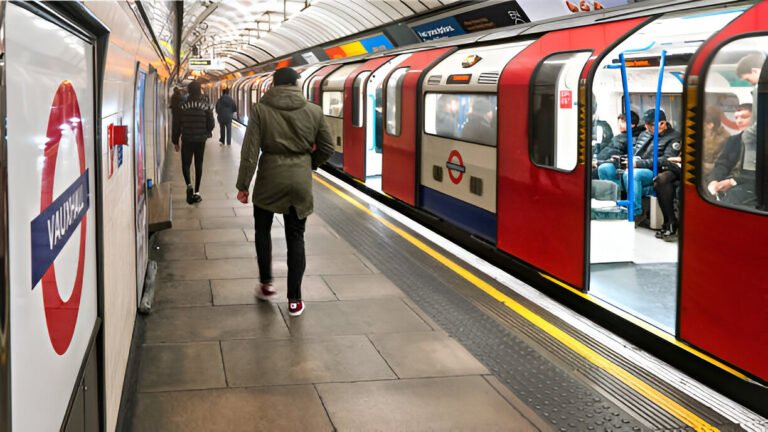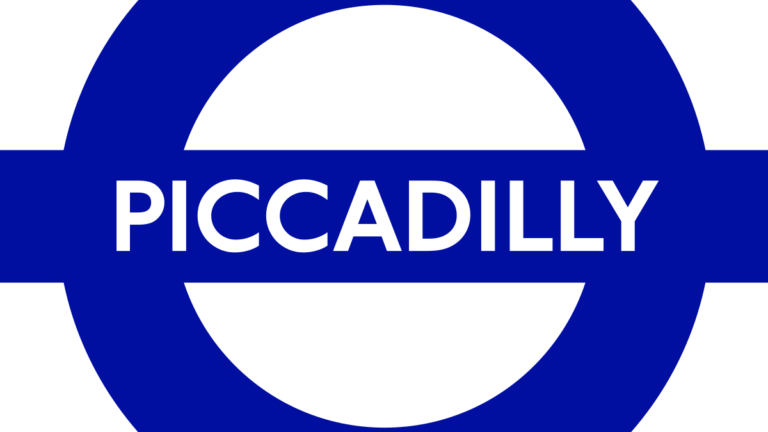The Waterloo And City Line may be the shortest route on the London Underground, but it plays a crucial role in the city’s transport network. This in-depth guide explores everything you need to know about this unique line, from its fascinating history to practical travel tips for modern commuters.

1. Historical Background of the Waterloo & City Line
Origins and Construction
- Opened in 1898 by the London and South Western Railway
- Originally designed to connect mainline trains at Waterloo with the City of London financial district
- One of London’s first deep-level tube lines, built using the “cut-and-cover” method
Why It’s Called “The Drain”
- Nickname comes from:
- Its deep underground tunnels (up to 22 meters below street level)
- The constantly damp conditions in early years
- Its function “draining” commuters from Waterloo to the City
Ownership Changes
- Operated by British Rail until 1994
- Transferred to London Underground as part of network modernization
- Now maintained by Transport for London (TfL)
2. Detailed Station Guide
Waterloo Station, London
Key Features:
- Busiest UK railway station (over 100 million annual passengers)
- Four Underground lines intersect here (Bakerloo, Jubilee, Northern, W&C)
- Major redevelopment projects ongoing (including new entrances)
Connections:
| Transport Mode | Details |
| National Rail | South Western Railway services to Surrey, Hampshire, Dorset |
| London Underground | Bakerloo, Jubilee, Northern lines |
| Buses | Over 30 routes serving all directions |
| Cycle Hire | Multiple Santander Cycles docks |
Accessibility:
- Step-free access to all Underground lines except W&C
- New lifts being installed as part of station upgrades
Bank Station
Key Features:
- One of London’s most complex interchange stations
- Direct underground link to Monument Station
- Major 2022 renovation improved passenger flow
Connections:
| Transport Mode | Details |
| London Underground | Central, Northern lines |
| DLR | Docklands Light Railway to Canary Wharf |
| Walking | 2-minute connection to Monument (District/Circle) |
Accessibility:
- Step-free access to DLR platforms only
- Major accessibility upgrades planned for 2025
3. Train Specifications & Operations (Deep Dive)
The Waterloo & City Line (aka “The Drain”) is London’s shortest, quirkiest Tube line—but its compact design hides some fascinating engineering. Here’s a detailed breakdown of its trains, signaling, and operations:

1. Rolling Stock: 1992 Stock (Refurbished 2015)
- Only 4-Carriage Trains on the Network
- Shortest trains on the Tube (other lines use 6–8 carriages).
- Designed for high-frequency, short-hop journeys (Waterloo ↔ Bank in 4 mins).
- Single-Ended Design (No Turning Needed)
- Unique among Tube lines: Trains have driver cabs at one end only.
- How it works:
- Arrives at Bank → All passengers exit.
- Driver walks to the opposite end (now the “front”) for the return trip.
- Why? Saves space—no need for a turnaround loop.
- Performance:
- Top Speed: 45 mph (fastest-accelerating Tube trains).
- 0–30 mph in 17 seconds (ideal for the line’s short distance).
2. Signaling System
- Fixed-Block Signaling (Legacy System)
- Unlike modern lines (Elizabeth Line, Jubilee), it hasn’t been upgraded to CBTC (Communications-Based Train Control).
- Limits max train frequency to 24 trains per hour (vs. 36+ on CBTC lines).
- Automatic Train Operation (ATO) Since 2015
- Drivers supervise; trains accelerate/brake automatically.
- Fun Fact: The 1992 Stock was retrofitted for ATO—one of the oldest trains to get this upgrade.
3. Depot & Maintenance
- Waterloo Depot (Underground Facility)
- Hidden beneath the main station—London’s only fully subterranean depot.
- Trains are stored and serviced here overnight.
- Major Work Requires Surface Access
- For heavy maintenance, trains are lifted 60+ feet to the surface via a shaft near Waterloo.
- Why? No above-ground depot exists for this line.
4. Quirks & Limitations
- No Step-Free Access
- Deep-level line with only escalators/lifts at Waterloo (Bank is stairs-only).
- Weekend Closures
- Often shut for engineering work (check TfL updates).
- No Night Tube
- Last train departs ~12:15 AM (Mon-Sat).
5. Why It Matters for Commuters
✔ Fastest Way Between Waterloo & Bank (4 mins vs. 15+ mins walking).
✔ Rush Hour Lifeline (Moves 15,000+ passengers/hour).
✔ Heritage Charm (One of the last “old-school” Tube lines)
🔧 TL;DR: Waterloo & City Line Specs
| Feature | Detail |
| Train Type | 1992 Stock (refurbished 2015) |
| Carriages | 4 (shortest on Tube) |
| Design | Single-ended (no turnaround) |
| Top Speed | 45 mph |
| Signaling | Fixed-block + ATO |
| Depot | Underground at Waterloo |
| Weakness | No step-free access at Bank |
Next time you ride “The Drain,” you’ll appreciate its hidden engineering! 🛠️
4. Passenger Experience and Travel Tips
Peak Hour Strategies
- Morning rush (7:30-9:00 AM):
- Trains depart every 3 minutes
- Platforms can get extremely crowded
- Pro tip: Use rear carriages for more space
- Evening rush (5:00-6:30 PM):
- Queues often form at Bank Station
- Consider walking to Monument Station as alternative
Luggage and Bicycles
- Foldable bikes allowed at all times
- Non-foldable bikes prohibited during peak hours
- Large luggage discouraged (no storage space)
Safety Features
- Platform edge doors at both stations
- 24/7 CCTV monitoring
- Emergency help points every 50 meters
5. Future Developments
Potential Weekend Service
- TfL considering limited Saturday operations
- Dependent on demand from financial sector changes
Accessibility Upgrades
- New lifts planned at both stations by 2026
- Tactile paving improvements in progress
Train Replacement
- New modular trains expected by 2030
- Will feature walk-through carriages and better ventilation
6. Cultural Significance & Hidden Gems
London’s shortest Tube line isn’t just a commuter workhorse—it’s a cultural icon with Hollywood appearances, literary nods, and surviving Victorian architecture. Here’s why it’s more than just “The Drain”
1. In Popular Culture
🎥 James Bond’s “Skyfall” (2012)
- The Waterloo & City Line tunnel doubled as a subterranean escape route in the film’s climax.
- Fun Fact: The scene used a mock-up set (real tunnels are too narrow for action sequences).
📚 Charles Dickens’ Dombey and Son (1848)
- Described the chaos of early tunneling near Bank Station:
“The earth was filled with hollow noises, and the air was thick with dust.” - Though the line opened in 1898, Dickens’ writing captured the upheaval of Victorian infrastructure projects.
🎵 Music & Folklore
- Nicknamed “The Drain” by 1920s workers (due to its damp tunnels).
- Referenced in The Kinks’ song “Waterloo Sunset” (a love letter to London’s transport hubs).
2. Architectural Time Capsules
🏛️ Bank Station’s Historic Rotunda
- The original 1898 entrance (now hidden inside the modern station) features:
- A glazed terracotta dome (rare for Tube stations).
- Edwardian-era signage preserved in the passage to the DLR.
- Pro Tip: Look for the “WAY OUT” mosaic tiles near the Northern Line transfer—they’re original.
🧱 Waterloo’s 1898 Tiling
- Behind platform barriers, you can spot cream-and-brown tiles with:
- Floral patterns (typical of late-Victorian design).
- Surviving “W & C” monograms (visible near the depot entrance).
🚂 Vintage Design Quirks
- No escalators until 1993 (passengers used lifts operated by attendants).
- Original 1898 tunnels are still in use—some of the oldest on the Tube.
3. Why Commuters Love (and Hate) It
✔ Speed: Still the fastest way to dodge above-ground traffic between Waterloo and the City.
✔ Quirky Charm: The only Tube line with no weekend service (a relic of its financial-district roots).
❌ No Air-Con: Tiny 1992 trains lack modern cooling (packed in summer!)
📜 TL;DR: A Line Steeped in History
| Cultural Nod | Example |
| Films | Skyfall (2012) tunnel chase |
| Literature | Dickens’ Dombey and Son |
| Architecture | Bank’s rotunda, Waterloo’s 1898 tiles |
| Nickname | “The Drain” (since 1920s) |
Next time you ride, imagine Victorian bankers and Bond villains sharing your commute!
7. Alternative Routes
| Route | Time | Best For |
| Walking | 15-20 mins | Exercise, avoiding crowds |
| Northern Line via London Bridge | 10 mins | When W&C is closed |
| Bus RV1 | 25 mins | Sightseeing along South Bank |
8. Expert Commuter Hacks (Save Time & Stress!
The Elizabeth Line isn’t just faster—it’s also smarter if you know how to use it like a pro. Here’s how London’s seasoned commuters maximize efficiency

1. Early Bird Special: Beat the Rush
✔ Empty Trains Before 7:15 AM
- The line gets packed during peak hours (7:30–9:30 AM), but early trains are gloriously quiet.
- Pro Tip: If you’re heading to Canary Wharf, a 6:45 AM train means no standing, no crowds.
✔ Off-Peak Bonus (Post-9:30 AM)
- Fares drop, seats free up—ideal for flexible travelers.
2. Bank Exit Strategy: Cannon Street Shortcut
✔ For East City/Docklands Workers
- Most commuters flood the main Liverpool Street exits. Instead:
- Get off at Liverpool Street Elizabeth Line.
- Follow signs for Cannon Street (National Rail exit).
- You’ll pop out closer to East City offices (vs. fighting crowds at Broadgate Circle).
- Why? Saves 5–10 mins during rush hour.
✔ Alternative for Moorgate: Walk via Farringdon’s back exits (fewer tourists).
3. Rainy Day Savior (Skip the Splash)
✔ Full Coverage Between Stations
- Unlike the Tube’s outdoor treks (e.g., Bank-Monument maze), Elizabeth Line stations have:
- Direct indoor links (e.g., Paddington Elizabeth Line → Heathrow T5 without stepping outside).
- Wider, drier platforms (no leaking ceilings like some Northern Line stops).
- Life Hack: If it’s pouring, use the Elizabeth Line to connect between Farringdon and Liverpool Street instead of walking.
4. Luggage Ninja Moves
✔ Heathrow Bound? Board at Paddington’s Front Carriage
- The front 2 cars have extra luggage space (less crowded than middle sections).
- Avoid: Tottenham Court Road between 8–9 AM (tourists + commuters = suitcase chaos).
✔ No-Stairs Trick at Farringdon
- Thameslink transfers are step-free—key for wheelchairs or heavy bags.
5. Quiet Car Vibes (Yes, Really)
✔ Back Carriages = Fewer Crowds
- Commuters cluster near interchange points (e.g., Bond Street escalators). Walk 2 extra cars down for seats.
- Bonus: Phone signal is strong in tunnels—unlike the deep Tube.
6. Weekend Engineering Workaround
✔ Check TfL Alerts
- The line occasionally closes sections (e.g., Abbey Wood branch on Sundays).
- Plan B: Use DLR from Custom House or Jubilee Line to Stratford.
🎯 TL;DR: Commute Like a Pro
- Early = Empty | Cannon Street > Liverpool Street | Rain-Proof Routes
- Luggage? Front carriage. | Thameslink = Step-Free | Back Cars = Quieter
The Elizabeth Line rewards strategy—use these hacks to save time, avoid stress, and stay dry.
Conclusion:
🚇 The Waterloo & City Line: London’s Tiny Titan
It may be the shortest Tube line, but the Waterloo & City punches far above its weight. Here’s why this 1.5-mile shuttle is a transport legend—and why London couldn’t function without it.
1. The Commuter Superhero
✔ Saves 15,000+ People Daily from a 25-Min Walk
- Waterloo ↔ Bank in 4 minutes vs. a soggy, congested above-ground trek.
- Peak-hour fact: Moves more passengers per hour than some entire tram systems.
✔ Financial District Lifeline
- Pre-pandemic, it shuttled stockbrokers, bankers, and lawyers with military precision.
- Still critical for avoiding Blackfriars Bridge chaos.
2. A Living Museum of Tube History
✔ Victorian Engineering Meets Modern Upgrades
- 1898: Opened as London’s second-deepest Tube (after the City & South London Railway).
- 1994: Transferred from British Rail to TfL—the last Tube line to be electrified.
- 2015: Got Automatic Train Operation (ATO), making it semi-robotized.
✔ Time-Capsule Features
- Original tunnel segments from 1898 still in use.
- The only line with no intermediate stations (pure point-to-point efficiency).
3. Silent Evolution
✔ Stealth Modernizations
- 2023: New CCTV and PA systems (though trains remain 1992 vintage).
- Future? Possible new trains by 2030 (but the single-ended design complicates replacements).
✔ Quirks That Endure
- No weekend service (a relic of its stock-market schedule roots).
- London’s only underground train depot (hidden beneath Waterloo).
4. Why Londoners Secretly Love It
- Predictable: No delays from leaves, rain, or tourists with oversized luggage.
- Nostalgic: The last Tube line where drivers still walk through trains to change ends.
- Underdog Pride: It’s the David among Goliaths (see: Elizabeth Line’s 60-mile sprawl).
🎯 TL;DR: Small But Mighty
| Role | Why It Matters |
| Time-saver | 4 mins vs. 25-min walk (rain or shine) |
| Historic icon | Victorian tunnels + 1992 tech in harmony |
| Quiet innovator | ATO-upgraded, but keeps its vintage soul |
Next time you board, remember: You’re riding a piece of history that keeps London’s heart beating.






